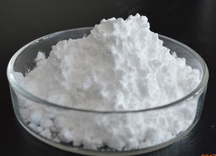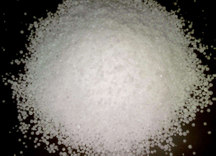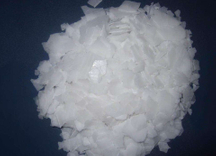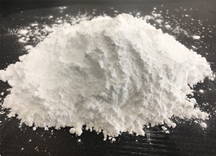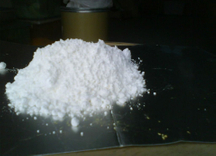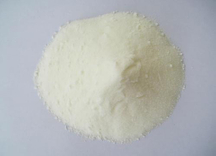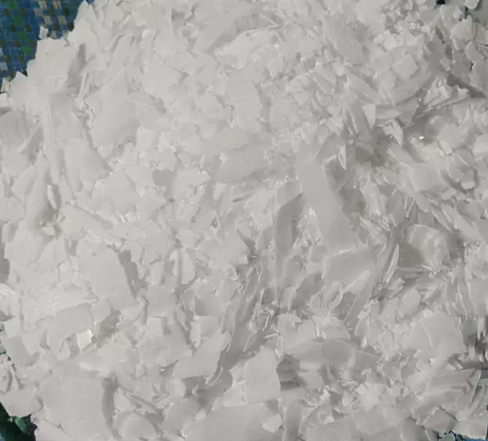
What is Naphthalene?
What is Naphthalene and Where is it Used?
Naphthalene is a white, crystalline solid with a distinctive odor. It is derived from coal tar or petroleum. This aromatic hydrocarbon is commonly used in various industries, especially as a raw material for producing phthalic anhydride.
Common Industrial Uses of Naphthalene
Phthalic Anhydride Production: Naphthalene is oxidized to produce phthalic anhydride, a crucial compound in plasticizers, dyes, and resins.
Solvent: It serves as a solvent in the production of certain chemicals and in the manufacture of mothballs.
Other Uses: Naphthalene is also used in the synthesis of various other chemicals and in the manufacture of certain medicines.
Differences Between Naphthalene and Other Aromatic Hydrocarbons
Unlike benzene or toluene, naphthalene has two fused benzene rings, making it more stable and less reactive in some processes. It is also less volatile than benzene, making it useful in applications like mothballs and as a solvent in specific chemical reactions.
![Phthalic Anhydride2 Phthalic Anhydride2]()
Phthalic Anhydride Production Overview
General Production Methods for Phthalic Anhydride
Phthalic anhydride is produced through two main methods: the traditional liquid-phase oxidation and the modern gas-phase oxidation.
Traditional Method: In the past, phthalic anhydride was commonly produced using liquid-phase oxidation of naphthalene. This process requires high temperatures and often uses a mercury-based catalyst, although it’s largely been replaced by more modern methods due to environmental concerns.
Modern Method: The most common process today involves gas-phase oxidation of naphthalene or o-xylene in the presence of vanadium pentoxide (V2O5) catalyst. This method operates at high temperatures (about 400-500°C), where naphthalene reacts with oxygen to produce phthalic anhydride with high efficiency.
The Importance of Using Naphthalene in Production
Naphthalene is a favored feedstock because it offers higher atom efficiency and better selectivity in producing phthalic anhydride compared to other hydrocarbons. Its stable structure and availability make it an ideal raw material. Using naphthalene also helps optimize the production process, allowing for cleaner reactions and higher yields of phthalic anhydride.
How Phthalic Anhydride is Produced from Naphthalene?
The Catalytic Oxidation Process
The production of phthalic anhydride from naphthalene involves a catalytic oxidation process. This reaction takes place in a gas-phase environment where naphthalene is combined with oxygen.
Role of Vanadium Pentoxide (V2O5) as a Catalyst
Vanadium pentoxide (V2O5) is commonly used as a catalyst in this process. It facilitates the oxidation reaction by lowering the activation energy, allowing the reaction to proceed efficiently at high temperatures.Reaction Conditions
The reaction typically occurs at temperatures of 400-500°C and at atmospheric pressure. These conditions promote the oxidation of naphthalene to form phthalic anhydride.Step-by-Step Breakdown of the Oxidation Reaction
Naphthalene (C10H8) reacts with oxygen (O2) in the presence of V2O5.
The reaction produces phthalic anhydride (C8H6O3) and water (H2O).
The overall stoichiometric equation is:
C10H8 + 3O2 → C8H6O3 + 2H2OThe reaction is exothermic, releasing heat during the process.
Importance of Oxygen as an Oxidizing Agent
Oxygen is a crucial component in this reaction, as it provides the necessary energy for the oxidation of naphthalene into phthalic anhydride. Without oxygen, the reaction cannot proceed, and phthalic anhydride cannot be produced.
Advantages of Using Naphthalene for Phthalic Anhydride Production
Why Naphthalene is a Preferred Feedstock
Naphthalene is chosen over other hydrocarbons due to its high purity and its effective reaction with oxygen. It provides a higher yield of phthalic anhydride, making it an efficient choice for industrial production.
Efficiency and Cost-Effectiveness
The naphthalene-based process is highly efficient, yielding large quantities of phthalic anhydride while using relatively lower amounts of raw material. This process is also cost-effective, reducing the overall cost of production.
Comparison with o-Xylene
While o-xylene is another common feedstock for phthalic anhydride production, naphthalene offers better atom economy, meaning more of the raw material is converted into the final product. This leads to higher yields and a more efficient production process.
What Are the Key Challenges in Phthalic Anhydride Production from Naphthalene?
Catalyst Deactivation
Catalysts like vanadium pentoxide (V2O5) play a critical role in the oxidation of naphthalene to phthalic anhydride. However, over time, they can become deactivated, losing their ability to effectively speed up the reaction.
How Catalysts Become Deactivated
Catalyst deactivation typically occurs due to the accumulation of by-products, such as carbon deposits, on the catalyst surface. This buildup reduces the catalyst's surface area and its activity.
Solutions to Overcome Catalyst Deactivation
One common solution is regular catalyst regeneration, which involves removing the accumulated by-products and restoring the catalyst's activity. This can be done by treating the catalyst with specific gases or high temperatures to burn off the impurities.
Strategies for Improving Catalyst Lifespan
To extend the lifespan of catalysts, careful monitoring of the reaction conditions is essential. Optimizing the temperature, pressure, and feedstock purity can help reduce catalyst degradation and maintain consistent performance.
Temperature Control and Hot Spots
Maintaining a consistent temperature throughout the reactor is crucial in phthalic anhydride production. Fluctuations in temperature can lead to hot spots, which can significantly affect the selectivity of the reaction.
Importance of Maintaining Consistent Temperatures
If the temperature is too high, unwanted side reactions may occur, leading to lower yields of phthalic anhydride. On the other hand, lower temperatures can slow the reaction and reduce efficiency.
Risks of Hot Spots
Hot spots are areas within the reactor that become excessively hot, typically due to localized variations in the reaction process. These hot spots can cause undesirable by-products to form, lowering the purity and yield of phthalic anhydride.
How Temperature is Controlled in Industrial Reactors
To control temperature, modern reactors often use molten salts or post-reactors. Molten salts help maintain an even temperature by absorbing excess heat, while post-reactors can be used to finish the reaction in a more controlled environment.
Post-Reaction Process
Separation and Purification of Phthalic Anhydride
Once phthalic anhydride is produced, it must be separated from unwanted by-products. The separation process typically involves two key methods: distillation and desublimation.
Separation of Crude Phthalic Anhydride
After the oxidation reaction, crude phthalic anhydride contains various impurities like maleic anhydride and phthalide. These by-products are separated using distillation, which helps purify the phthalic anhydride by exploiting differences in boiling points.
Role of Distillation and Desublimation
Distillation is used to separate phthalic anhydride from lower boiling impurities, while desublimation cools the gas phase to directly form solid phthalic anhydride, ensuring it is free of contaminants.
Importance of Removing Contaminants
Removing impurities like maleic anhydride and phthalide is crucial because they can degrade the quality of the final product. These by-products can also interfere with the downstream processing and applications of phthalic anhydride.
Use of Post-Reactors for Enhanced Yield
To further improve the yield and purity of phthalic anhydride, a post-reactor system is employed.
Description of Post-Reactor Technology
Post-reactors are designed to complete the oxidation process after the main reactor. In these reactors, the gas mixture from the first reactor is subjected to further reactions that convert any remaining raw materials into phthalic anhydride, enhancing the overall yield.
How Post-Reactors Operate Adiabatically
Post-reactors work adiabatically, meaning they regulate temperature without heat exchange with the surroundings. This helps control the reaction environment, ensuring a more efficient conversion of raw materials.
Benefits of a Two-Reactor System
A two-reactor system, consisting of the main reactor and a post-reactor, offers several benefits. It allows for better temperature regulation, reduces the formation of by-products, and ultimately increases the yield of high-quality phthalic anhydride.
Future of Phthalic Anhydride Production
Bio-Based Alternatives
As the demand for sustainable practices grows, bio-based alternatives to traditional phthalic anhydride production are gaining attention.
Overview of Potential Bio-Based Production Methods
Research into bio-based production methods for phthalic anhydride focuses on using renewable feedstocks such as biomass, plant oils, and sugars. These feedstocks can be converted into phthalic anhydride through similar catalytic processes, offering a greener alternative to fossil-based raw materials.
Advantages of Moving Toward Bio-Based Production for Sustainability
Bio-based production methods reduce reliance on fossil fuels and help lower greenhouse gas emissions. By using renewable resources, the environmental impact of production is minimized, making it a more sustainable option for industries.
Research Trends in Reducing Reliance on Fossil-Based Feedstocks
Research is focused on improving the efficiency of bio-based production methods, reducing costs, and making them commercially viable. Scientists are exploring innovative ways to optimize the conversion of biomass into high-value chemicals like phthalic anhydride.
Conclusion
Phthalic anhydride is produced from naphthalene through a catalytic oxidation process. Naphthalene’s high purity and efficiency make it a preferred feedstock.
As the industry evolves, research into bio-based alternatives is gaining momentum, offering a sustainable future. Technological advancements will continue to improve yield and reduce environmental impacts.
FAQ
Q: What is the role of vanadium pentoxide in the production of phthalic anhydride from naphthalene?
A: Vanadium pentoxide (V2O5) acts as a catalyst in the oxidation of naphthalene, promoting the reaction at lower temperatures and increasing efficiency.
Q: Can phthalic anhydride be produced without naphthalene?
A: Yes, phthalic anhydride can be produced using other feedstocks like o-xylene, though naphthalene is preferred due to better atom economy and efficiency.
Q: What is the main advantage of using naphthalene over o-xylene in phthalic anhydride production?
A: Naphthalene offers higher yields and better selectivity, making it more efficient and cost-effective compared to o-xylene.
Q: How are environmental concerns addressed in phthalic anhydride production?
A: Environmental concerns are mitigated by using advanced catalysts, controlling emissions, and exploring bio-based alternatives for sustainable production.












